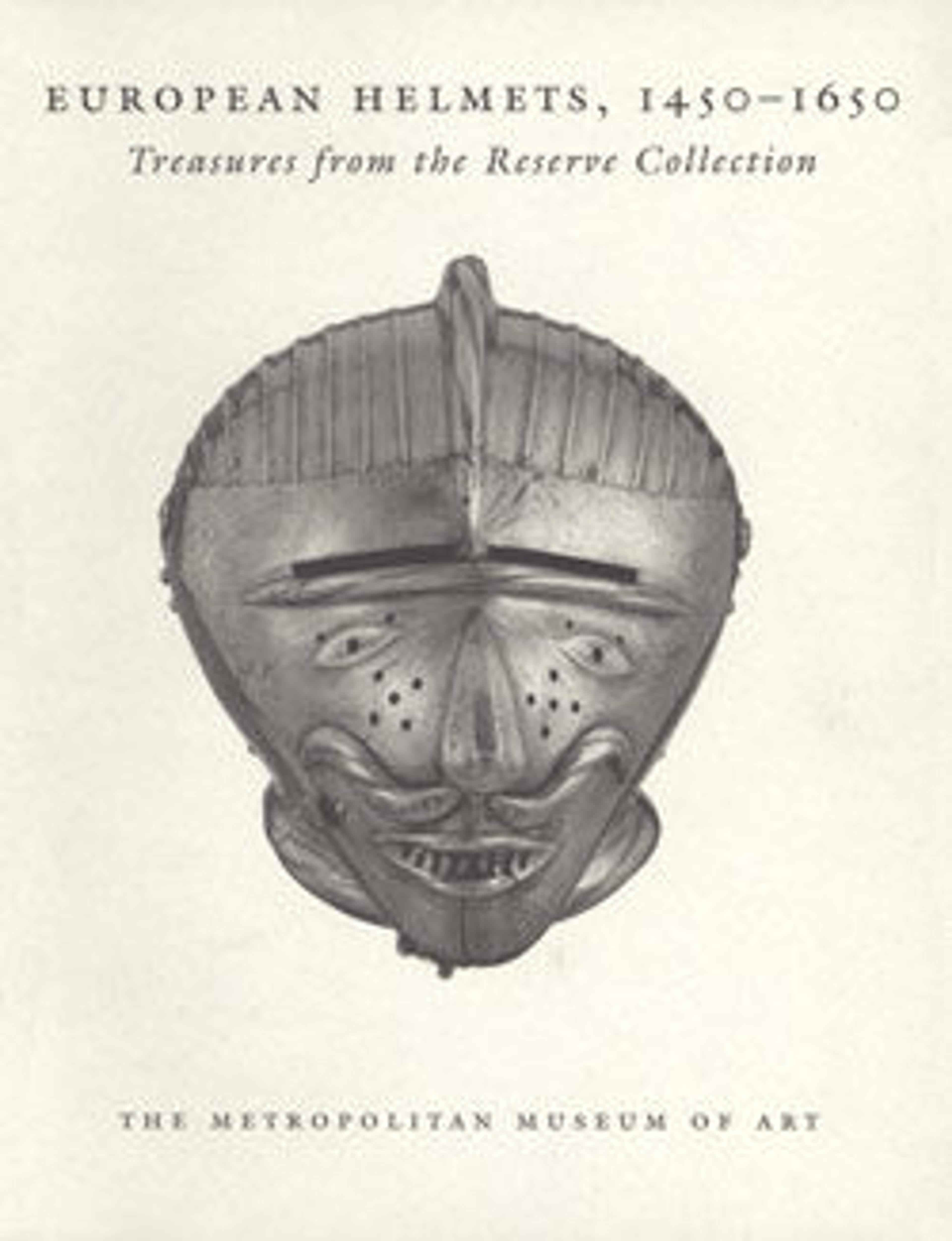Sallet and Buffe for a Rennzeug in the Saxon Fashion
The long-tailed German sallet was out of fashion as a field helmet by the early sixteenth century, but it continued to be used thereafter for the Scharfrennen, a joust fought between two contestants with sharp (rather than blunted) lances in an open field. Specially designed armors for this contest, known as Rennzeuge, included sallets bolted at the front to a buffe––a large rigid defense covering the lower face and neck––which in turn was bolted to the breastplate so that the head and upper body remained immobile. This sallet and buffe belong to a distinctive series of Rennzeuge made for use in the Saxon court at Dresden. Although unmarked, they are thought to have been made by the court armorers at Annaberg, in the Saxon territories. Two complete harnesses of this type are in the Metropolitan Museum's collection (acc. nos. 29.92.3, .4).
Artwork Details
- Title:Sallet and Buffe for a Rennzeug in the Saxon Fashion
- Date:ca. 1570–1600
- Culture:German
- Medium:Steel, leather
- Dimensions:H. 20 in. (50.8 cm); W. 8 3/4 in. (22.2 cm); D. 14 3/4 in. (37.5 cm); Wt. 10 lb. 3 oz. (4598 g)
- Classification:Helmets
- Credit Line:Gift of William H. Riggs, 1913
- Object Number:14.25.589
- Curatorial Department: Arms and Armor
More Artwork
Research Resources
The Met provides unparalleled resources for research and welcomes an international community of students and scholars. The Met's Open Access API is where creators and researchers can connect to the The Met collection. Open Access data and public domain images are available for unrestricted commercial and noncommercial use without permission or fee.
To request images under copyright and other restrictions, please use this Image Request form.
Feedback
We continue to research and examine historical and cultural context for objects in The Met collection. If you have comments or questions about this object record, please contact us using the form below. The Museum looks forward to receiving your comments.
